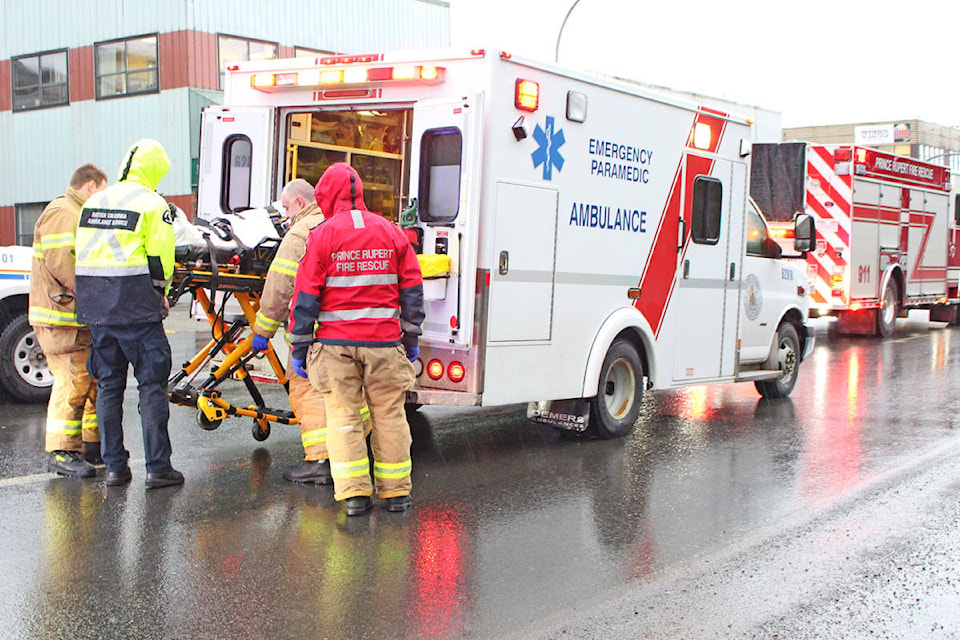The B.C. government is nearing its goal of providing 99 communities with rural paramedic support, and has added six new advanced paramedic positions in larger communities.
Advanced-care paramedic jobs are being added in Prince Rupert, Campbell River, Cranbrook, Salt Spring Island, Fort St. John and Valemount, as the province and the new Ambulance Paramedics of B.C. union implement a new three-year agreement ratified Oct. 1.
Advanced care paramedics specialize in trauma care with cardiac resuscitation.
The 99 communities are getting expanded service from community paramedics, including home visits to check on medications and other home services, as well as assistance with care home residents.
Rural paramedicine started as a pilot project in Tofino, Ucluelet, Port Hardy, Cortes Island, Fort St. James, Hazelton, Chetwynd, Creston and Princeton in the spring of 2017. It has since grown to 129 community paramedic positions, with many communities having two paramedics sharing the equivalent of a full-time position.
Beginning under the previous government and continuing today, the province is moving away from on-call paramedic jobs that had low pay and often couldn’t retain skilled people in small communities. There will still be on-call positions in addition to the rural paramedicine program, but the system is changing as a result of the new union agreement.
“The parties have agreed to a new scheduled on-call deployment model that will improve 24-hour emergency response coverage and the recruitment and retention of paramedics in up to 92 rural and remote communities in B.C.,” the Health Employers Association of B.C. said in a statement to Black Press.
READ MORE: Heart of Our City: Cay Hülsen is integrating health care into the community
The three-year agreement includes general wage increases of two per cent per year, the finance ministry’s current mandate for all public service union employees.
After the NDP government took over in the fall of 2017, Health Minister Adrian Dix established paramedics and dispatchers as a separate union local, to integrate them with care homes and home support for seniors. He said it would also help with B.C.’s response to the opioid overdose crisis, which has stretched ambulance resources to their limits.
B.C. Emergency Health Services has also introduced a new dispatch protocol for 9-1-1 calls that has proven controversial in some communities. Implemented in response to a rise in non-emergency calls such as vehicle accidents with no injuries, it allows dispatchers to prioritize available ambulances, and lets paramedics treat and release patients instead of taking everyone to a hospital emergency.
Fraser Lake and Central Kootenay Regional District sent resolutions to B.C.’s annual municipal convention in September, arguing that the change takes already thin ambulance coverage away from rural communities to meet demand in urban centres. They called for more use of volunteer firefighters and rescue societies to respond to calls.
RELATED: ‘Critical condition’ series examines B.C. pre-hospital care
Part 1: ‘People are dying from treatable medical conditions’
Part 2: Reports support claims of subpar care
Part 3: Is there hope beyond Hope for rural ambulatory care?
Part 4: Policy prevents advanced paramedic care in rural areas
Part 5: Better pre-hospital care in rural B.C. could save lives AND money
@tomfletcherbc
tfletcher@blackpress.ca
Like us on Facebook and follow us on Twitter.
